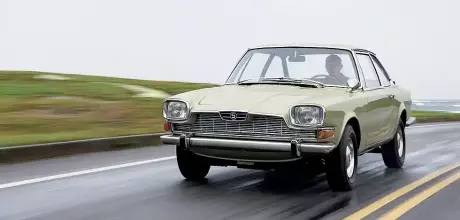1967 Glas 3000GT
The zenith of car production by BMW’s near-neighbour could have been the flagship for all of Bavaria, says James Elliott.
Photography Josh Sweeney / Shoot for Details
THE GLASS CEILING
Josh’s superb photography accompanies James Elliott’s story on.
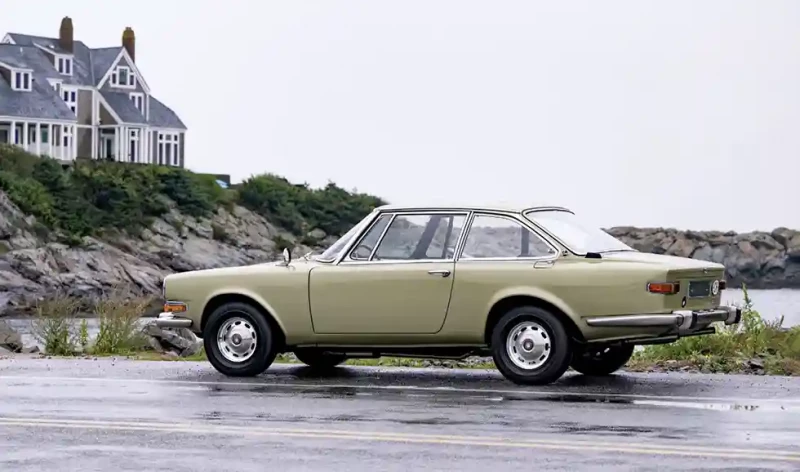
For a company that has been building cars for 96 years, it is amazing how late in the day BMW forged its own identity and direction. Some would argue that it was really born only with the Neue Klasse. They’d be wrong, of course, but between the 328s and Baroque Angels, the company does have a rich history of advancing itself via the work of others. It started at the very beginning with the Austin Seven/ Dixi, its financial fortunes were revived post-war via Iso’s Isetta bubblecar, but when it tapped into the creative stream of Glas after buying the company in 1966, all it did was rapidly wind down operations – including Glas’s much-admired range-topping V8 coup…
‘WITH THE STYLISH ITALIANATE GLAS 2600GT BARELY A YEAR OLD, MIGHT CANNING IT HAVE BEEN A HUGE MISTAKE BY BMW?’
Why? Well, perhaps because it had only recently euthanised its own V8 coup. (the Bertone-bodied 3200CS) and replaced it with its own four-cylinder Karmann-shelled 2000 and 2000CS, the perfect foundation for the iconic E9 straight-six coup.s that were just around the corner, with the M30-powered 2800CS at the vanguard. Or, maybe, it was because the two main reasons BMW bought Glas were its paperwork (cambelt tech and patents) and land (after much redevelopment over many decades, Glas’s Dingolfing plant would become the largest in BMW’s European empire, churning out over 250,000 cars a year) and it had no interest in the actual hardware. Yet, with the stylish Italianate Glas 2600GT barely a year old, might that have been a huge mistake? Clanger or not, it meant that Glas at least went out with a bang rather than a whimper (CityRover, anyone?).

Glas had its roots in agricultural machinery and was just 100km down the road from BMW in Bavaria. The family-run company had itself enjoyed a post-war leg-up from Italy, its wealth being built on manufacturing Vespas in the early 1950s when the seed drill market declined.
Following the almost inevitable trajectory of the boutique manufacturers of the day, after scooters came microcars, in this case the Goggomobils that became the mainstay of the company from 1955. Its rear-mounted and air-cooled two-cylinder two-stroke engines ranged from 250cc to nearly 400 (reflected in the T250, T300 and T400 designations) and the cars’ appeal was obvious in such straitened times – they were less than three metres long, weighed not much more than 400kg and sipped fuel at 50mpg while offering a wholly acceptable top speed of around 50mph. Would you really want to go much faster than that in one? The perhaps now-better-known Dart is a red herring here, an entirely Australian invention based on Goggomobil mechanicals with a glassfibre body.
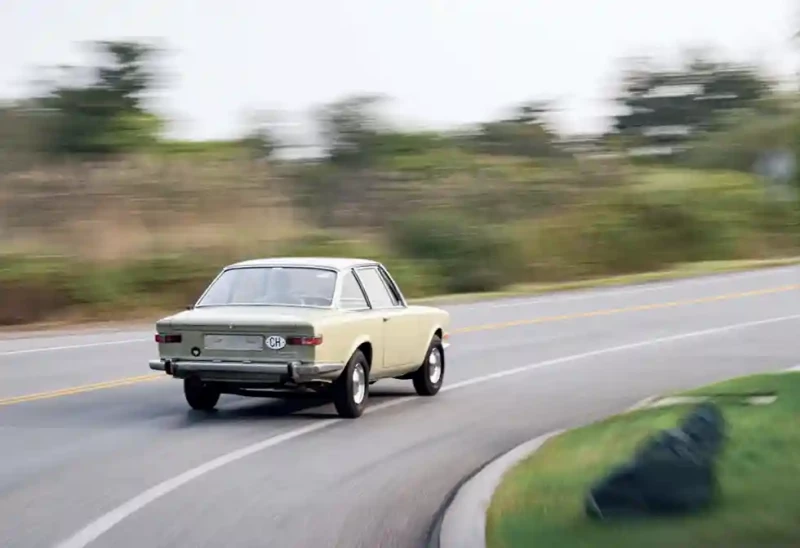
Though the German-built Goggomobils may be something of a novelty today, in austere post-war Europe these four-speed saloons, coup.s and vans sold in their hundreds of thousands and gave Glas the scale and confidence to move into grown-up cars. Not that grownup, as it happens, because its baby GTs – starting with an overhead-cam 1300cc engine in 1964 and a 1700cc option (also available as a saloon) a year later – still weighed in at well under the tonne. The pretty corporate styling was supplied by Piedmont’s Frua and the bodyshells were supplied by neighbouring Maggiora.
Meanwhile, elsewhere Glas was pioneering ex-BMW man Leonhard Ischinger’s nylon cambelt tech in its less attractive monocoque 1004/1204/1304 series.
Then, in 1966, BMW came knocking. The GT was thereafter fitted with the BMW 1600 (1573cc) engine until the models were phased out two years later. In fact, all Glas’s products were re-engined, re-badged or dropped, and that included the company’s flagship car, the 2600GT. Originally, this luxury GT had been devised to be a straight-six – which ironically might have fitted better with BMW’s evolving portfolio – but it was rapidly discovered by Glas chief engineer Karl Dompert that doubling up Glas’s 1290cc four on a common crank would be so much cheaper and easier. Hence the 2580cc V8 with twin overhead, belt-driven camshafts was born and was housed in the 1700 saloon platform with a new body from Frua. When the upmarket GT made its debut at Frankfurt in 1965, it was clear that Pietro had been cribbing his own homework and the new German car was instantly dubbed the ‘Glaserati’ for its striking resemblance to contemporary Modena models.
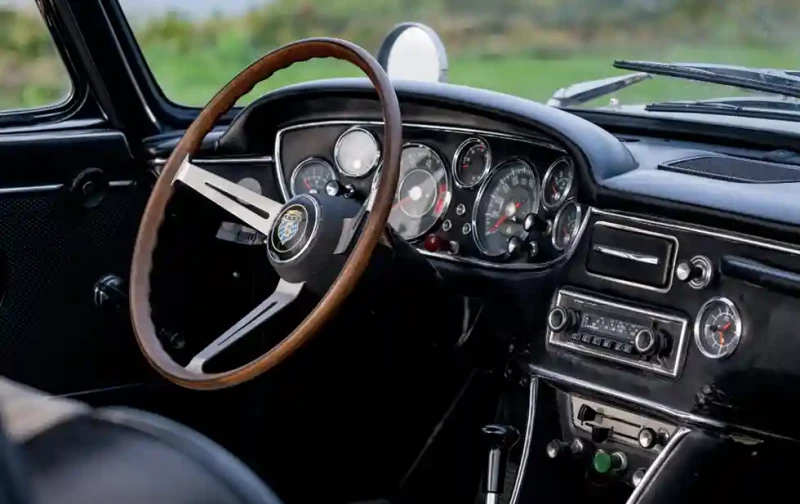
By the time cars started rolling off the production line a year later, it was only two months prior to BMW taking over Glas. The new owner wanted power increased so a new V8 mating two of the 1489cc fours supplanted the 2600cc V8 to offer the new BMW-badged BMW-Glas 3000GT from September 1967. Six months later, despite an unusually reasonable price for such a glamorous, niche car, the Glaserati was gone, after precisely 666 units were manufactured, weighted slightly towards the 3000GT.
Octane found this example at the excellent Audrain Newport Concours where it was in Class E, European 1960-80, alongside the highly diverse likes of Ferrari and Maserati GTs and a Citro.n SM. It is a 1967 3000GT, which means it is one of those run-out cars post-BMW takeover that was still called a Glas, but usually wore BMW badges and was equipped with the alloy-head Glas 3.0-litre V8 fed by triple Solex 35DDIS carbs and with overhead camshafts.
It is owned by Myron Vernis, and is shown at Audrain by him and his wife Kim. The name will likely be familiar if you are very active on car social media, especially circles known as ‘weird car Twitter’. Or if you watch YouTube, where he crops up often, including on Jay Leno’s Garage, or if you regularly attend any major US concours live. The best way. Myron, from Akron, Ohio, is the grand poobah, the panjandrum of the obscure, without ever entirely tipping over into the La Brea pits of American glassfibre specials of the 1950s and ’60s. Not that he hasn’t had them, but that is more the scene of Mark Brinker, Myron’s co-conspirator on the mammoth book A Quiet Greatness. This multi-volume work celebrating the Japanese motor industry won Publication of the Year at the 2023 Historic Motoring Awards by a landslide.

But a Glas is not that obscure, surely? Damn right, it is thoroughly mundane by Myron’s standards. His first car was a Porsche 356, which he still has, and that triggered an obsession that culminated in owning the likes of 901 prototypes, 914 pick-up and even a Porsche engine that had once powered a European ski lift. Plus the one-off Paxton Phoenix, a Brooks Stevens-designed, 356-powered car bearing a remarkable resemblance to the Argentinian Justicialista. It was devised by chainsaw and supercharger magnate, and founder of Lake Havasu (yes, the fella who bought London Bridge), Robert Paxton McCulloch, and conceived to be powered by an Abner Doble steam engine (see Jay Leno’s column).
It wasn’t all Porsches, however. There was also the oneoff Hoffman X-8, a diversion into rotaries, many more Loewy designs and much else besides. In fact, of the 75 or so cars currently in the Vernis collection, the Glas ranks as one of Myron’s sensible cars… alongside his Mazda Cosmo, Hino Contessa, and Autech Zagato Stelvio AZ1.
He bought the Glas from dealer storage in the Netherlands as a project in 2013 and shipped it to Greece for a sympathetic but complicated restoration before taking it home to the US. Myron says: ‘I’m a big fan of Frua and intrigued by technological innovation, plus my collecting tendencies trend to lower-production vehicles, so this car was the trifecta.
‘It was a targeted search, though. Once I decided on one it took me about two years to find this example. It was in bad but restorable condition because it was complete and had never been disassembled. The body was rusty and the engine was frozen, but, miraculously, the interior was in nice condition.
‘The colour is original. When I bought it, the areas of the body that weren’t rusty were silver paint, but while stripping it my body man discovered the green. He was afraid I was going to be upset so was surprised and relieved at my joy that it was green.’
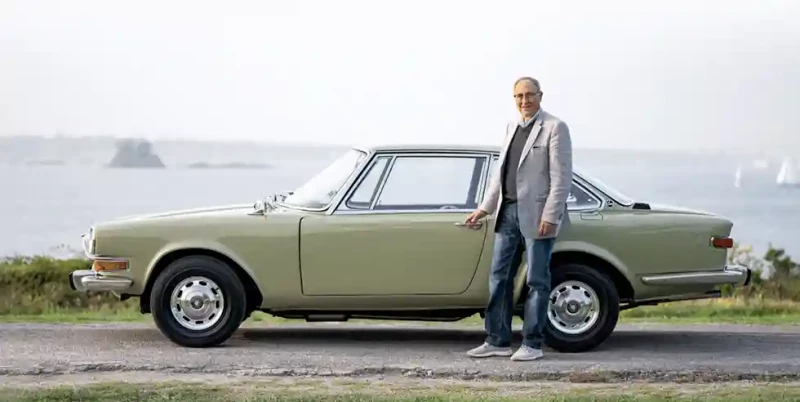
The restoration took three years, during which the many unique and hand-made features of the Glas, and the scarcity of replacement parts, became apparent. New pistons and rods were made, the block machined and the aluminium heads welded and re-welded several times to fill hairline cracks. It was structurally sound, but the panelwork was extensive and complicated, too. The brightwork and interior were preserved rather than restored and the car was finished in 2017.
Since then it has been put to work, as Myron explains: ‘I drive nothing but older vehicles every day and everything I have gets put into rotation for use. As Kim reminds me, I (may) have too many cars. Coupled with the fact that Ohio roads are coated with salt four-to-six months a year means that there are often longer gaps of non-use than I would like. That’s why I like taking cars to events like Audrain that have driving tours as part of the agenda. Also I think these cars deserve more recognition.’
I have to say it is a handsome beast, this Glas, even battling the north-east coast Atlantic squalls battering Rhode Island, the Frua body shimmering by the ocean in that wonderful Olivgrün Metallic (Olive Green Metallic) paint. The ‘Glaserati’ sobriquet is well-earned and I can see 5000GT, Sebring, Quattroporte and Mexico in the mix, but there is not only Maserati in the details. There are 911 door locks, a Mercedes-Benz window winding mechanism and Merc bus headlights. Plus a special and spectacular Porsche gearknob from a 356. Even so, for a full four-seater GT of the 1960s with a high slab tail and comparatively small lights, it cuts a certain dash.
Inside, the dark tan interior is said to be totally original and it is a lovely place to be, with an enormous glasshouse and an uninterrupted view through it in the manner of Giugiaro or Michelotti. No pesky (from an aesthetic rather than safety point of view) headrests. There are sumptuous, thick and giving vinyl front seats with very comfy cloth inserts; in the rear are two separate seats with a long centre console and a deep parcel shelf. In proper coup./GT style the rear windows open only a limited distance, and horizontally, via a flick-clasp. The fronts wind down traditionally but are overshadowed by their quarterlights, which are opened with a bulky turning knob and are very useful, especially for clearing that North Atlantic condensation.
The Glas is equipped like a luxury European GT, too, with a fine selection of dials spattered with little V8 logos and a dotted redline at 5500rpm that gets solid at 6000 and goes up to 7000. There are no give-aways in the excellent build or spec that this car comes from a small manufacturer and it feels every bit as aristocratic as its contemporaries from Italy, the UK and elsewhere.
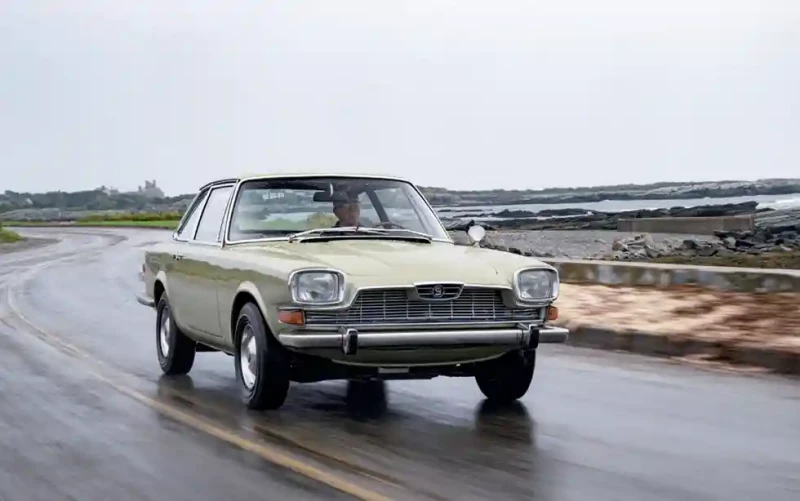
It is similarly regal on the move, but in a more aloof vein, wafting and wallowing with imperious indifference. That is not to say that there is some sense of detached ennui when it comes to handling, it rides nicely and corners neutrally and flat enough, just that the Glas is not for hustling: it will not be hustled, nor will it even entertain such a vulgar pursuit. And that makes it closer to many contemporary Maseratis than the Modenaists will ever admit.
Driving through a Getrag four-speeder, which is more vague than expected, but easy to master quickly because of the very basic pattern and the thoughtful tilt of the lever towards the driver, the 3000GT is only punching out 150bhp, the same as Triumph managed with its rather more notorious 3.0-litre V8 and 100bhp-plus shy of the 4.7 and 4.9 Maserati V8s. It does feel like that in its performance, but the engine is silkily flexible and free-revving and churns up quite nicely for serene progress.
You could probably tune it well past its 123mph – no-one ever reached peak output on Solexes, after all – but then you would risk losing its character.
The same approach probably shouldn’t be taken to the slightly underperforming brakes – given the sophistication of the system (discs all-round, inboard at the back), they can surely be made to work better without compromising the car. In action, the clapping wipers, which we are using plenty and are operated by a beautifully delicate switch on the stalk, resemble The Beatles on the cover of Help! The clutch is nice and light, however, and acceleration smooth through a responsive pedal and the progressive operation of the carbs, one as a default, the other two coming into play when you are pushing it more.
Such suave touches epitomise the non-raucous, effortless pacemaking of the Glas 3000GT. From the cossetting driver’s seat as much as from outside, it would be all too easy to convince yourself that this car is the missing link between the New Class and the E9, that BMW avariciously snapped up Glas simply to get its hands on its wonder-GT to further its own cause. Ignore the 3000GT’s face and the derri.re, squint at the lines between, or the seats and the way they are set in the shell, especially the rears, or the shell itself, the panoramic glasshouse, even the grab-handle on the passenger side, and you might even start to believe such a fairytale. But the truth is less romantic: like so many depressing businessy things put together by pragmatists rather than dreamers, it really was not about the actual cars but the intangibles (the landgrab), and the ethereal spirit of Glas did not live on in BMW.
It was a shame that the Glaserati, as Italian a German as ever there was, had to be sacrificed on such a pyre of BMW progress, but it was simply one of those different strains of evolution that fails to dominate and so disappears. It’s tough out there.
TECHNICAL DATA 1967 Glas 3000GT
- Engine 2982cc V8, OHC per bank, iron block, alloy heads, three Solex carburettors
- Max Power 157bhp @ 5100rpm
- Max Torque 173Ib ft @ 3900rpm
- Transmission Four-speed manual, rear-wheel drive
- Steering Worm and roller
- Suspension Front: double wishbones, coil springs, telescopic dampers. Rear: de Dion axle, radius arms, coil springs, telescopic dampers, Boge self-levelling
- Brakes Discs, inboard at rear
- Weight 1350kg
- Top speed 123mph
- Acceleration 0-60mph 10.0sec
Clockwise, from below Owner Myron Vernis has over 70 cars at the moment; progress in the Glas is as silky-smooth as its power delivery, but handling is far from sporting; V8 is two conjoined Glas GT motors; driving onto the concours field; as if anyone couldn’t tell, Frua claims the styling.
Below, left and right Interior is proper upmarket Euro GT spec, with lots of dials and even a dished three-spoke wheel; rectangular headlights scream Quattroporte, but if anything the rear is more overtly Maserati.
‘The BMW-Glas V8 has a distinctive appeal with a sporty yet classic vibe. Attention to detail in both exterior and interior design elements is what sets apart iconic vehicles and contributes to their timeless fascination.’


